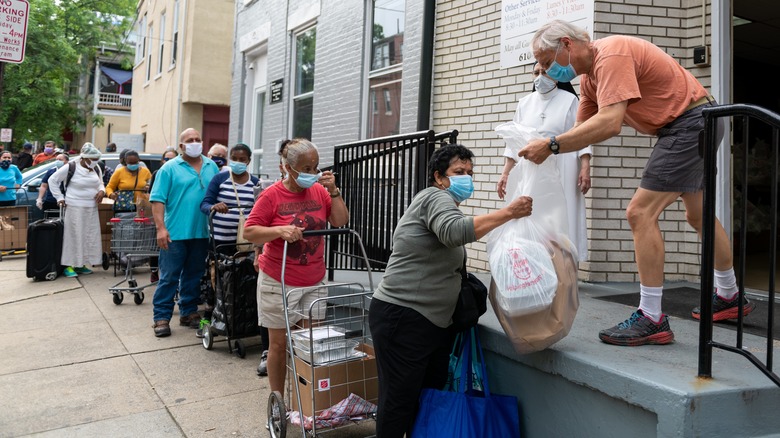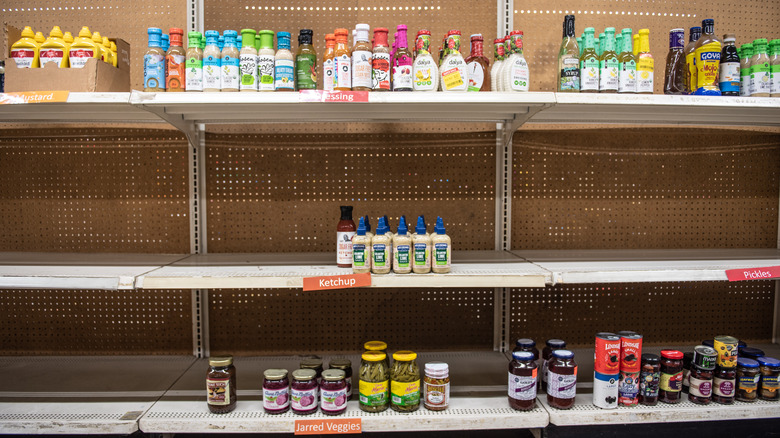New Report Shows The Important Role Food Banks Played During The Pandemic
A report by Feeding America shows that while America's dependency on emergency food resources decreased in 2021, it has not returned to pre-pandemic numbers, highlighting just how important food pantries have been to the country in the past two years.
According to the report the network of 200 food banks, 21 state agencies, and 60,000 local pantries provided services to over 53 million people in the U.S. throughout 2021. While down from the 60 million-plus people who sought food assistance during 2020, this figure is still about 30% higher than the organization's pre-pandemic numbers. "While we, as a country, are in a better position today than two years ago, with the availability of vaccines and with unemployment rates rebounding, the pandemic showed us that too many people live on the brink of food and financial insecurity," said Feeding America CEO Claire Babineaux-Fontenot. "In addition, we know that some communities experience food insecurity more deeply than others and that it exists in every county, parish and borough in the U.S."
The news should be a relief for food pantry volunteers who had been struggling to keep shelves stocked due to inflation and supply chain issues, which had slowed donations even amongst year-round demand during the pandemic, according to The Guardian. Unfortunately, as the pandemic crisis has slowly improved, supply issues have only worsened.
Returning crisis
Since March, inflation, which was already high due to lingering pandemic issues, boomed, largely as a result of Russia's invasion of Ukraine, as The Guardian notes. As two of the world's leading suppliers of grains, Ukraine's crippled production and export capacity and global boycotts of the Russian market have sent the world economy into chaos, as The Washington Post notes. Nowhere is this more evident than with food and gas prices, with AAA reporting a record-breaking national average gas price of $5 per gallon on June 13, and food prices up by 9.4% in the last year, according to the USDA.
These increases have hit Americans hard. Insurance services company Breeze reports that 88% of households are cutting back spending, in June 2022. It isn't just a matter of cutting luxuries, NPR reports that many working households are now seeking out food assistance once again from local pantries because they cannot afford to meet their needs at the grocery store. In June alone local news agencies in Iowa, Texas, Colorado, and North Carolina, all reported increased traffic to local food banks while donations to the organizations are down. Supply chain issues and shortages have reduced donations from grocery stores, which the pantries depend on. Feeding America says it plans to address this crisis with the White House in September 2022 as part of its goal to end U.S. hunger by 2030.

